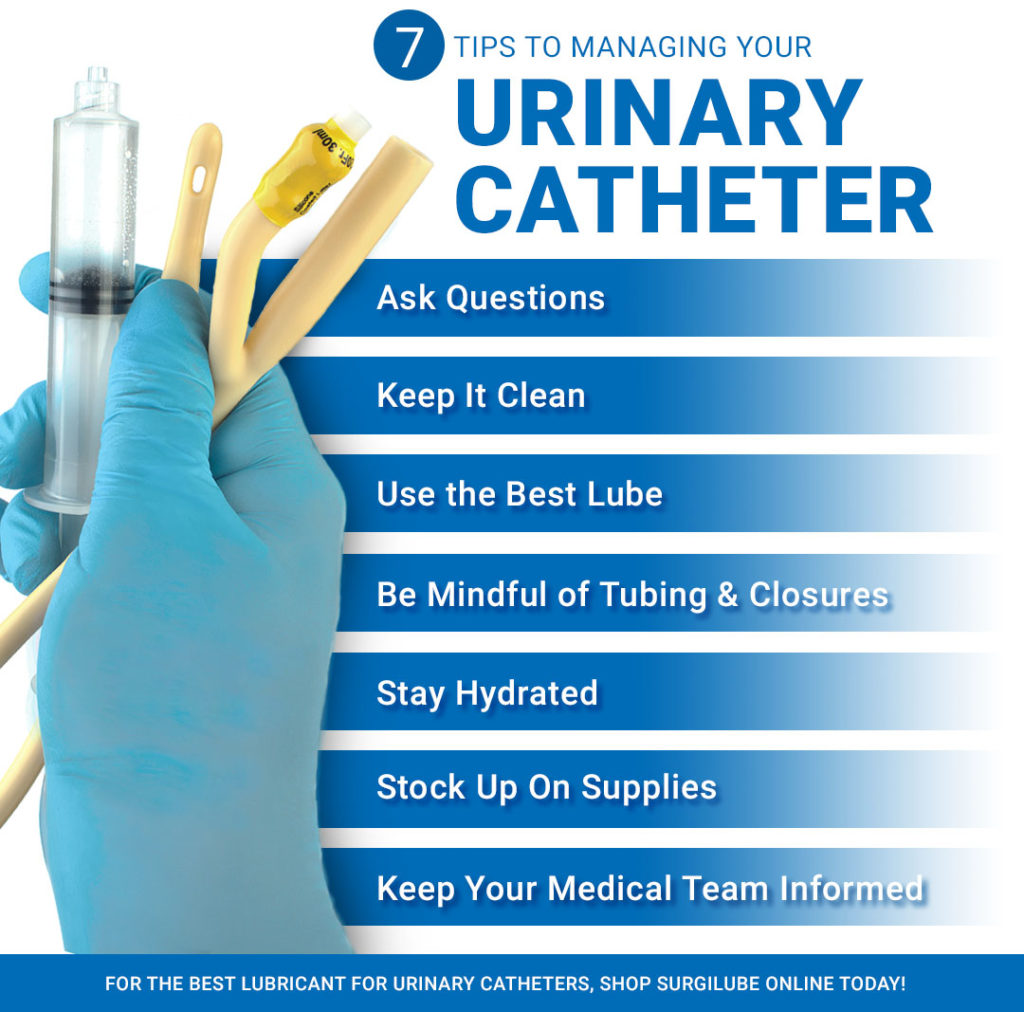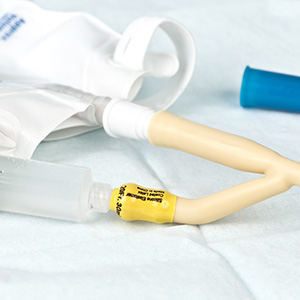Tips for Urinary Catheter Management
If you or your loved one is home with an indwelling, intermittent, or suprapubic urinary catheter, you may be wondering how you will manage this new need. The good news is, a urinary catheter is fairly safe and convenient, and once you get the hang of it, you won’t even notice it! The even better news is that you are not alone. Millions of Americans manage their urinary conditions with a catheter, making it one of the biggest home medical industries. What does this mean for you? It means there are support groups, tried and true equipment and techniques, and a whole catalog of products to help make your life easier!
While you may be dreading the thought of managing your own urinary catheter and rely heavily on your amazing medical staff to care for your needs, learning how to do it yourself can be empowering and freeing! It is very important to learn proper techniques and get some helpful tips to help reduce the risk of infection and make the whole process more comfortable for you. Join us in today’s post as we discuss some helpful tips for managing your urinary catheter at home.

Ask all the questions.
Don’t be afraid to ask your medical team a lot of questions. Catheters should be prescribed by your doctor and proper instruction should be given to you by your healthcare provider. Typically, they will show you how to use the equipment and will ask you to show them how you will do it at home. This is your opportunity to ask any question, no matter how seemingly silly or insignificant. It is a good idea to write down any questions you have between appointments so that you do not forget them all when your provider is right in front of you. If you do encounter any questions, concerns, or problems, never hesitate to call your nurse helpline or your provider directly.
Practice advanced cleaning practices.
Be sure to keep the urinary catheter and the catheter site clean to avoid infections. If a urinary catheter is left in place, as is the case with indwelling Foley catheters and suprapubic catheters, these tubes provide a port of entry from the outside of your body directly inside, so particular care must be taken. Wash the site of entry and the exposed tube at least twice daily, and more if needed. And, when performing an intermittent straight cath, it is just as important to ensure that the products and conditions are not providing bacteria the opportunity to enter your bladder. If you use a condom catheter, be sure to remove it regularly and clean the skin underneath. Urinary tract infections (UTIs) are common with those using a catheter but can be avoided with some simple good hygiene.
- Always wash your hands thoroughly prior to and after emptying the urine bag or changing the catheter.
- Rinse your bag and tubing with a mixture of water and vinegar.
- Use medical cleaning supplies on the entry point and the exposed tubing.
- Empty the drainage bag several times each day.
- Change the catheter at least once per month.
- Wear clean underwear.
Use high-quality lube.
Lubrication should always be used when inserting an intermittent urinary catheter to reduce pain, discomfort, and friction – all of which may also help reduce infection. Not all lubricants are created equal, so it is important to use one that will do the most good for you. Important features of your lube for self-cath include:
- Bacteriostatic – to help prevent infection.
- Water-soluble – offers the most comfortable slickness and won’t compromise the integrity of the silicone hose.
- Viscous – reduces friction and makes the process smoother.
- Sterile – prevents bacterial growth in the lubricant and reduces the incidence of UTI.
At HR Pharmaceuticals, we are proud to be the world’s largest supplier of surgical lubricant. Our Surgilube® surgical lubricant is the most sought after and renowned surgical lubricant in the medical community. It is trusted by surgical and medical practitioners from around the world as the go-to lubricant for surgical and gynecological procedures and is safe for use on catheters of all types.
Be mindful of the tubing and closures.
 Be careful to avoid tugging on the tubing, twisting it, or stepping on it while you are walking. Ensure that the line does not become bent or kinked, preventing urine to flow out. It may be helpful for you to clip the tubing to your clothing to avoid this. Most urine collection bags are able to secure to your leg to help avoid this tugging. Always keep the urine bag below your bladder (below your waste) to prevent urine from flowing back into your bladder and causing an infection. Additionally, be mindful of completely closing the drainage port to avoid leaking or spilling.
Be careful to avoid tugging on the tubing, twisting it, or stepping on it while you are walking. Ensure that the line does not become bent or kinked, preventing urine to flow out. It may be helpful for you to clip the tubing to your clothing to avoid this. Most urine collection bags are able to secure to your leg to help avoid this tugging. Always keep the urine bag below your bladder (below your waste) to prevent urine from flowing back into your bladder and causing an infection. Additionally, be mindful of completely closing the drainage port to avoid leaking or spilling.
Stay hydrated.
This tip is a great general life tip but is even more important when you have an indwelling Foley catheter. The tubing can become clogged if it is not flowing. Drink plenty of fluid to help keep your urine flowing well. Have your medical provider teach you how to flush the line to relieve any clogs and report it to your medical provider if you notice that your urine output has decreased or is minimal.
Stock up on supplies.
Stock up on spare catheter equipment so that you have it on hand. Not only is this practical for routine management, but especially important in the event of an emergency. It is wise to create a place for all your supplies such as a dedicated drawer. Keep it organized so that taking inventory is quicker and easier. If your insurance covers routine delivery of supplies, be sure to set that up and have enough supplies to cover if a delivery is missed. When you travel, make sure you take enough supplies for one and a half times the length of your trip, just in case!
Work with your medical team.
While the day to day management of your urinary catheter will be up to you and your in-home care providers, it is important to work with your medical team. Be sure to follow their instructions on use and care of your catheter and schedule and keep routine follow-up appointments.
Call your doctor if you experience any of the following:
- PainOpen areas, raw skin, or lesionsDecreased urine outputLeakage around the catheterBlood in urineCloudy or foul-smelling urineFeverChillsFatigueBack painThe tubing gets pulled out while the balloon is inflated.
For all of your catheter insertion and management needs, trust the surgical lubricant that has owned the mark of assurance, consistency, and convenience for more than 80 years — Surgilube surgical lubricant.